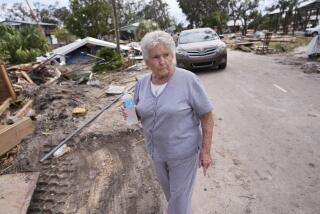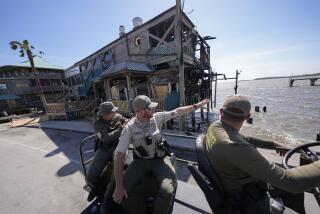Hurricane Watch
As Hurricane Earl threatens the Florida panhandle and Gulf Coast, scientists are slightly altering their hurricane season forecast--from average to slightly higher than normal. This is due to a La Nina weather pattern forming in the equatorial Pacific Ocean.
Hurricane season lasts from June through November, but most occur August through October because this is when tropical seas are warmest, making for optimal conditions.
August’s Hurricane Bonnie, an Atlantic storm, was the first large hurricane of the season and at 400 miles across, was four times the size of 1992’s Andrew, the century’s costliest hurricane. Meanwhile, Hurricane Danielle is still maintaining 80 mph wind, but moving away from the U.S. mainland.
(1) Upper atmosphere high pressure above the growing disturbance is needed for a tropical storm to turn into a hurricane. Moist tropical air rises 1,000-2,000 feet and the resulting condensation creates huge cumulus clouds.
(2) Clouds evolve into slowly rotating bands of thunderstorms.The Earth’s rotation gives incoming air a counterclockwise spin in the Northern Hemisphere, clockwise in the Southern Hemisphere. Air flowing out from center curves clockwise.
(3) Warm, moist air from outside the disturbance spirals slowly inward, replacing the air that rose upward in the thunderstorms. Inward flow spirals faster and rises as it approaches center.
(4) Swirling winds reach gale force of 39 mph and disturance is dubbed a tropical storm.
(5) When winds reach 74 mph, circular motion becomes so strong that a calm spot called the eye forms at the center, and a hurricane is formed.
Outlook
The theory that El Nino is causing more or stronger hurricanes is false. El Nino patterns in fact break apart storms before they become hurricanes. But a developing La Nina is creating a favorable environment for hurricane activity in the Atlantic. This is because La Nina’s westerly winds in the upper troposphere--the layer of air from the ground to 40,000 feet--are too weak to shear the tops off of developing hurricanes.
Measuring Intensity
Forecasters rate hurricanes based on wind speed.
*--*
Category Damage Winds 1 Minimal 74-95 2 Moderate 96-110 3 Extensive 111-130 4 Extreme 131-155 5 Catastrophic 156 and over
*--*
Where They Form
On average, 10 tropical storms a year develop over the Atlantic Ocean, Carribean Sea or Gulf of Mexico. About six of these become hurricanes and of those, two are major (wind speed in excess of 110 m.p.h.) The top four worst areas for hurricanes: North Carolina’s Outer Banks, Florida Keys, southern Florida and Galveston, Texas.
(1) Thunderstorms develop in an area over the tropical Atlantic
(2) Thunderstorms swirl, become a tropical depression
(3) Winds reach 39 mph, classified as tropical storm
(4) Winds top 74 mph, become a hurricane
(5) Hurricane dissipates over land
Most Damaging Storms
Costliest storms to hit mainland United States (damages are adjusted to 1996 dollars):
*--*
Name Category Year Cost Andrew 4 1992 $30,475,000,000 Hugo 4 1989 $8,491,561,181 Agnes 1 1972 $7,500,000,000 Betsy 3 1965 $7,425,340,909 Camille 5 1969 $6,096,287,313 Diane 1 1955 $4,830,580,808
*--*
Hurricane Byproducts
Storm surges occur when a large dome of water 50 to 100 miles wide sweeps across the coastline where a hurricane makes landfall. This surge of high water topped by waves is highly destructive. The stronger the hurricane and shallower the water, the higher the surge will be. Nine out of 10 hurricane deaths are from surges.
(1) Danger is greatest at high tide
(2) Low pressure storm system allows high waves to form
(3) Storm moves inland, pulling water ashore
(4) Water surge damages property and beaches
****
Tracking the Storms
For more information, check the following websites: www.nhc.noaa.gov/www.fema.gov/fema/trop.htm
Sources: Federal Emergency Management Agency; National Weather Service; National Oceanic and Atmospheric Administration; National Hurricane Center; “Skywatch: The Western Weather Guide”; “The Weather Book”; Associated Press
Researched by JULIE SHEER / Los Angeles Times
More to Read
Sign up for Essential California
The most important California stories and recommendations in your inbox every morning.
You may occasionally receive promotional content from the Los Angeles Times.










